► New Hyundai Kona Hybrid review
► All-new look, impressive tech and kit
► How does it drive on UK roads?
The Hyundai Kona was a fairly late addition to the smörgåsbord of B-segment SUVs when it hit the market in 2017, and has been playing catch-up ever since. So, it comes as no surprise that its transformation into second-generation version – and including with hybrid power – has come around rather quickly.
The ingredients for success were all there, but it was a commercial underachiever compared with the Vauxhall Mokka, Ford Puma and Nissan Juke it was targeting. But in line with customers’ demands, the 2024 Kona gets more interior and boot space than before, and gets a more grown-up, boldly-detailed SUV look to fit neatly in the range between the Bayon and the Santa Fe.
Three powertrains are available, with a petrol, this hybrid or a fully electric model. The ICE range comprises of a a 1.0-litre mild-hybrid petrol with 118bhp, the full hybrid 1.6 with 139bhp tested here and a turbocharged version of the same engine pushing out 195bhp and limited to the N Line S and Ultimate only.
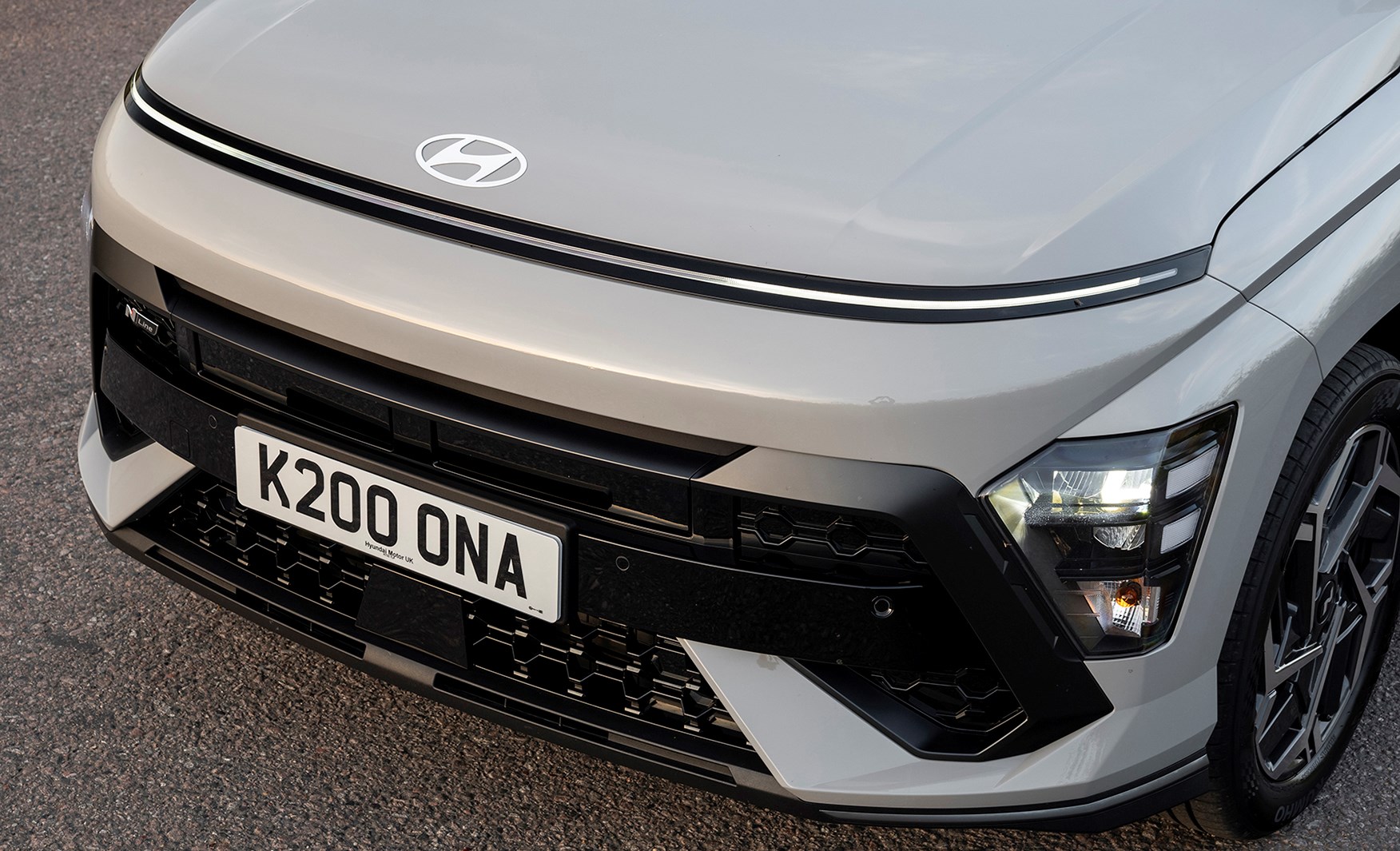
What’s different on the 2024 Hyundai Kona Hybrid?
The Hyundai Kona Hybrid’s stand-out styling won’t have escaped you. With its flush front and rear, with lighting bands, it continues Hyundai’s move towards bold design. Its intricately surfaced flanks, mean it sits easily alongside the Santa Fe with its distinctive lighting signatures, but that smooth front and rear are a contrast – and not a jarring one. Good on Hyundai’s team, led by SangYup Lee, for pushing ahead with such a bold look.
It sits on the same K3 platform as the Kia Niro, so it’s larger and chunkier than before, gaining 175mm in overall length (to 4355mm), and 60mm in wheelbase (now 2660mm). Passengers feel the benefit of that growth in dimensions, and the overall impression that this is a much more grown-up car.
For the Kona Hybrid, the turbocharged petrol engine is carried over with minimal changes. The 1.6-litre four-pot is paired with a 1.56kWh battery and 43bhp e-motor, with power being sent to the front wheels via a seven-speed dual-clutch auto for a total power output of 139bhp.
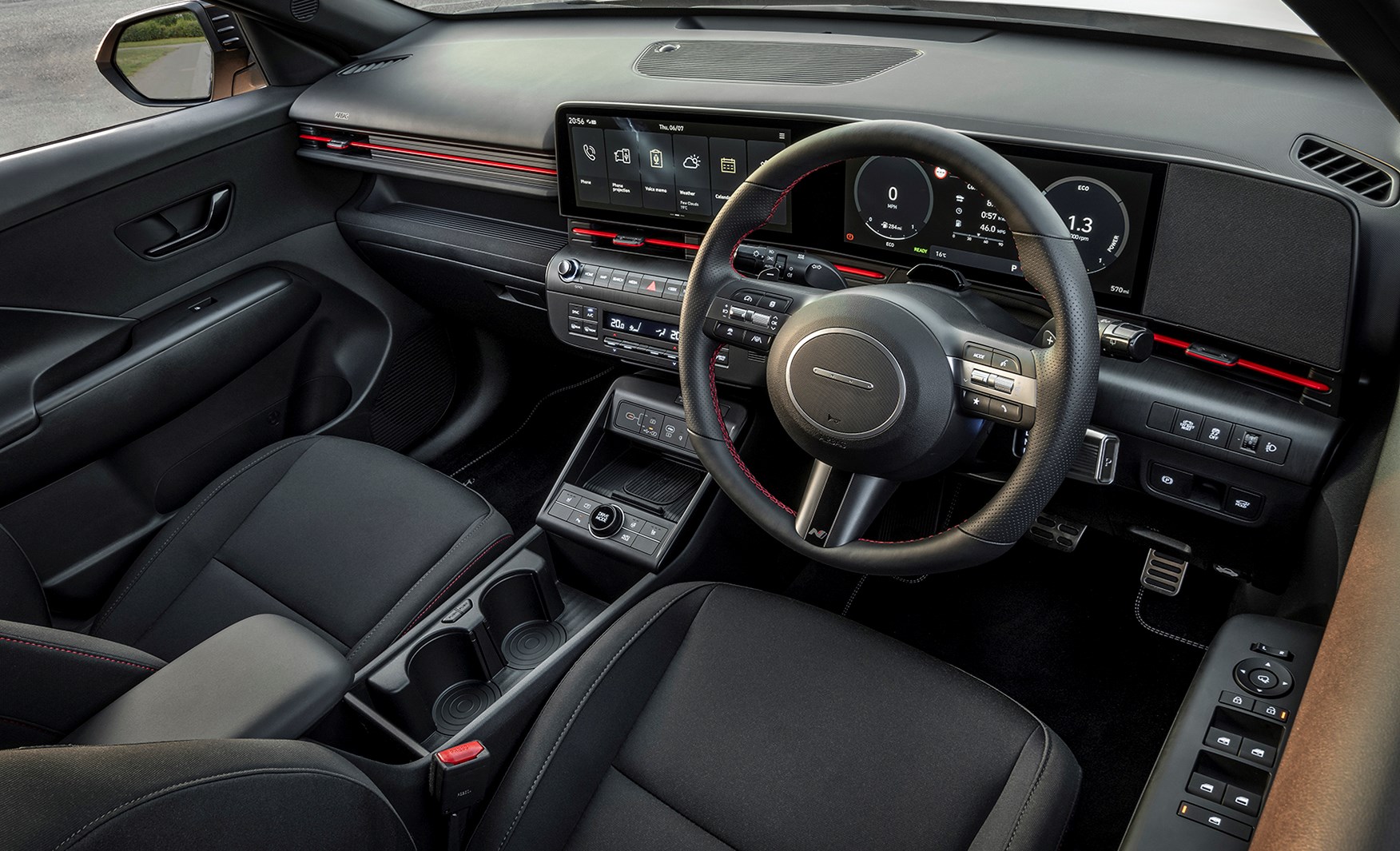
What’s it like inside?
The dashboard’s centrepiece is a pair of twin-12.3-inch displays mounted in a single panel that runs across the top of the fascia. This echoes the Ioniq 5 and 6’s futuristic interiors, although the overall effect is far more subdued thanks to restrained colour pallettes.
We approve of the mixture of touchscreen, speech and physical controls for its driver systems. Want to make the interior hotter or cooler? Reach for the handily-placed toggle controller, rather than stab at the screen. Trust us, Kona drivers will appreciate this. The air vents are nicely hidden (but very effective), and there are lots of places to store your nick-nacks.
Typical family SUV stuff, then. It’s all very 21st century, very functional, even if the interior itself is a tad bland. As for space, the Kona Hybrid’s rear is more commodious than before, with competitive head and legroom, while the boot grows from 374 litres to 466.
How does it go?
Long story short, the bold design story is not reflected under the bonnet. It’s a naturally-aspirated full hybrid, and lacks the muscular feel of a decent turbo, and as such, unless you wring its neck, the Kona Hybrid feels gutless. So, overtaking manoeuvres and getting up to speed on the motorway take a while.
And when you do that, the engine thrashes and howls like a spoilt toddler told to go to bed early. And guess what? If you drive it like that, fuel economy takes a dive. Still, that’s not really the point: the Kona is a potter-about kinda car, not a hair-raiser.
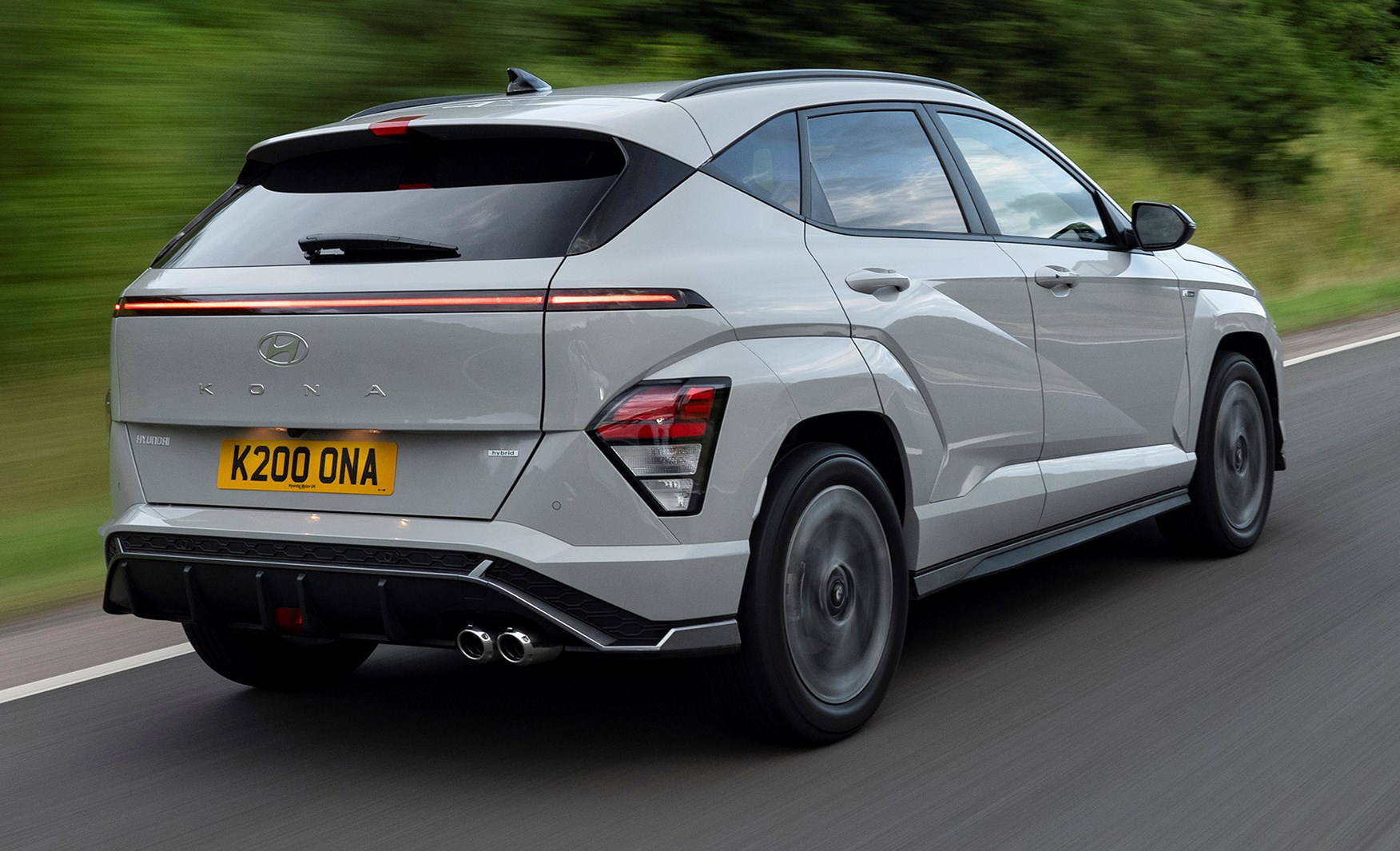
Dial it back, though, and the powertrain is a little more in its element, keeping quiet and unobtrusive as you nip around town. But, interestingly, larger hybrids from Hyundai – such as the new Tucson – highlight the Kona’s reluctance to switch to electric-only power regularly.
You can switch it to EV mode to engage the electric part of the powertrain in a wider capacity – but as soon as you’re out of town, the engine is woken up with a disgruntled stir. Even so, in a week of testing, we managed 40mpg in harder driving and 48mpg in gentle motorway running. That’s someway short of Toyota and Honda’s best hybrids.
How does it handle?
After the uninspiring drivertrain’s so-so performance, it’s a good news story for the Kona’s handling. The driving position is highly adjustable, allowing you to sit low if that’s your thing, and it provides good steering wheel reach and rake adjustment. Sitting high doesn’t push you into the roof either, and that puts you in a good place in town.
It hums along the motorway in an undistinguished manner, and won’t offend here. But get it on to a challenging B-road and the Kona wakes up. The steering is sharp and not too light, and body control is impressive – turning sharp corners in a Kona is an exercise in poise and precision.
This comes as a genuine surprise, and suspect our N Line’s large wheels and sporty set-up contribute to this – it would be good to see how a more humble version acquits itself. But if you want to be entertained, and don’t want a Ford Puma (offered only as a mild hybrid), the Kona’s not too bad a substitute.
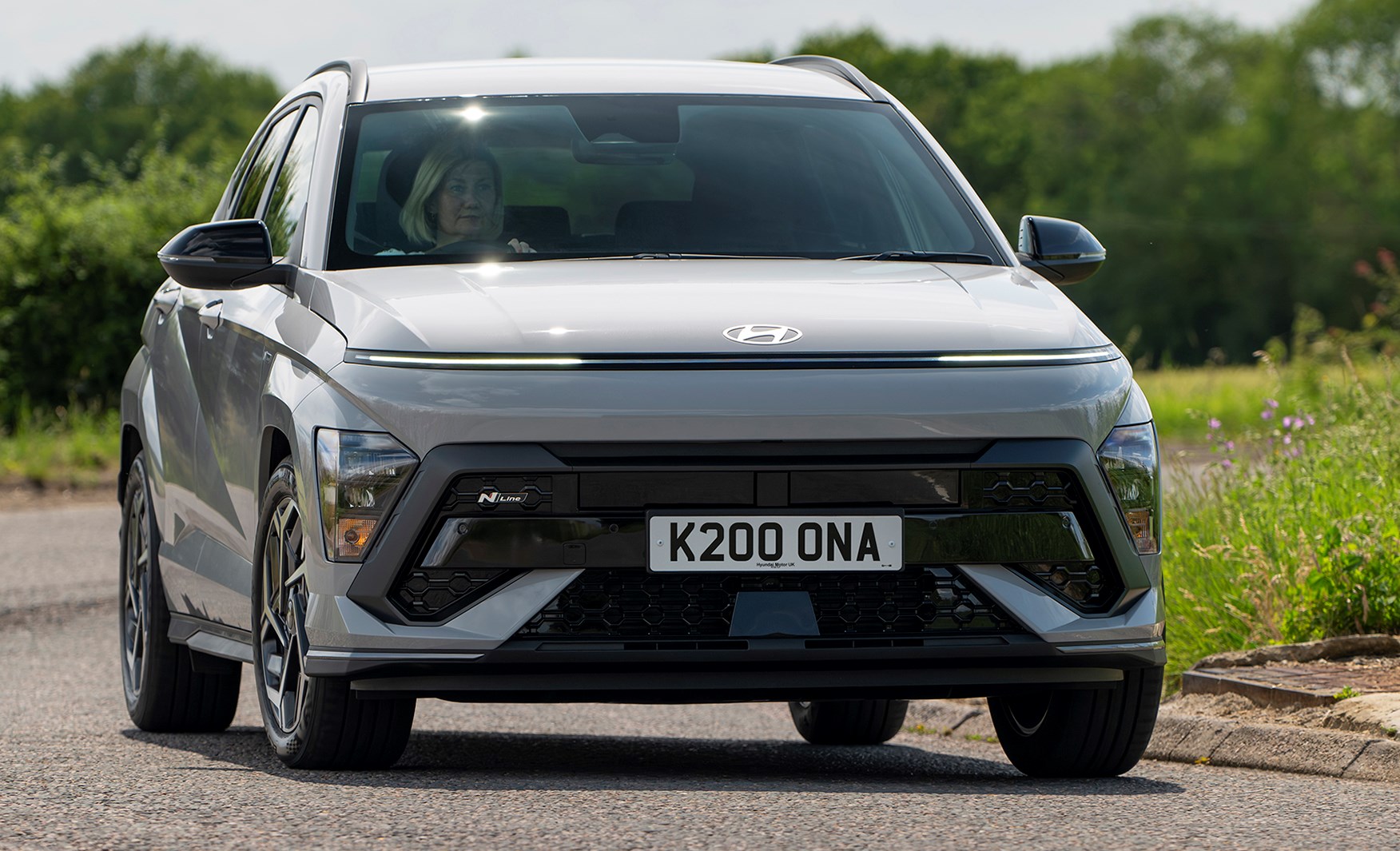
The ride and refinement are better than before, but it’s not going to challenge the class-leading Skoda Kamiq (no hybrid version available) in this department. Our N Line test car (pictured) has 18-inch wheels, giving it a busy ride. Luckily the excellent damping keeps it all in reasonable check.
Hyundai Kona Hybrid: verdict
We just couldn’t fully get on with the updated Kona Hybrid. The powertrain is uninspiring, not economical enough, and reluctant to use its electric power to the best effect. The busy ride will also destabilise some families.
The good news is that the interior is very usable, and its B-road poise, distinctive looks, capable chassis, and technology on offer mark it out as being nearer the front end of the B-SUV grid. So, if you’re sold on Hyundai’s owership proposition and long warranty, you won’t be saddled with a sub-standard car.
We suspect the Kona Electric will be the far better offering though (as was the case before), and if you’re able to do the maths on running a full EV over a hybrid, we’d recommend waiting. But right now, the Kona isn’t quite convincing enough to tempt us away from a Honda or Toyota hybrid.
Read more Hyundai reviews here
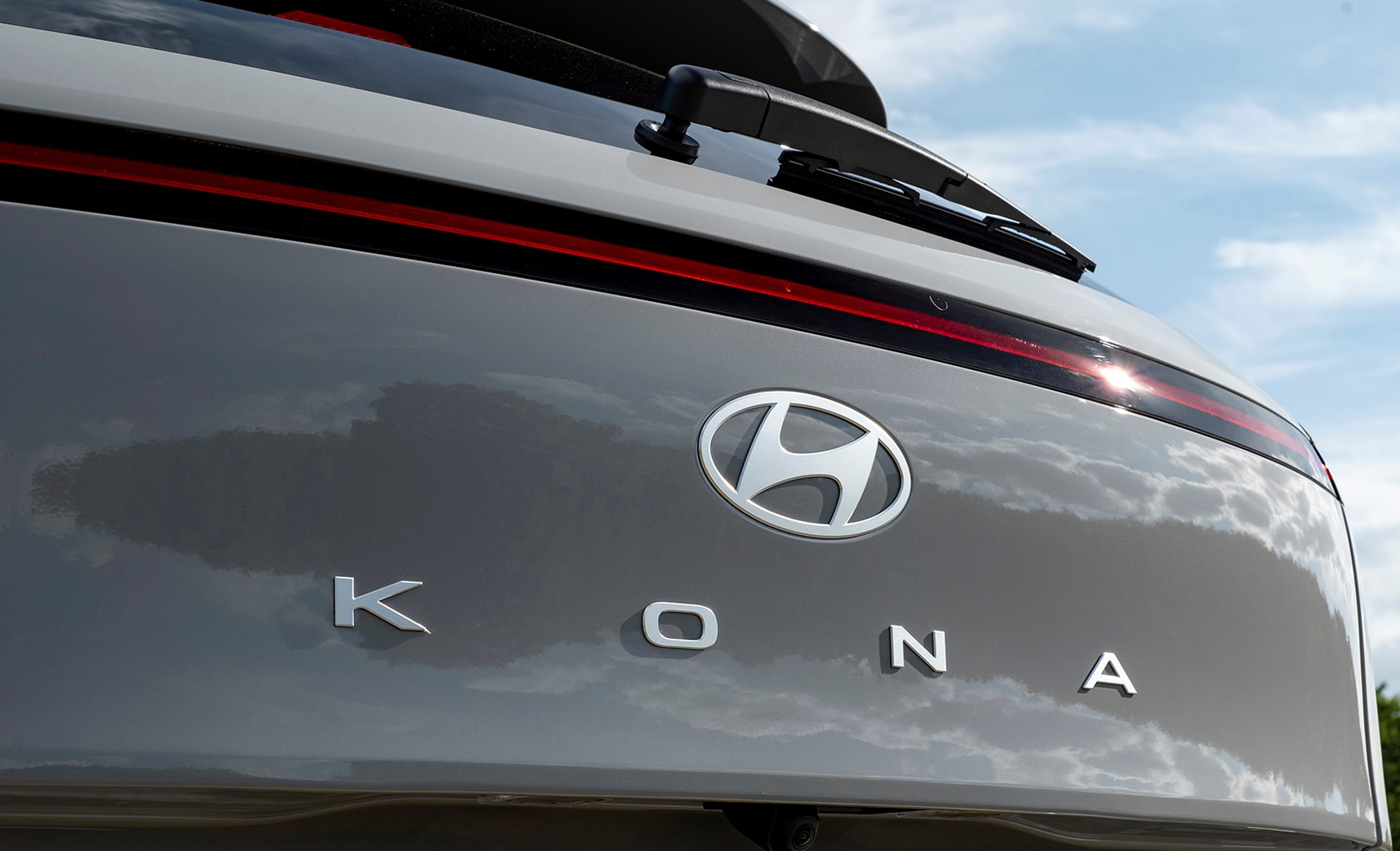
Specs below for Hyundai Kona Hybrid N Line